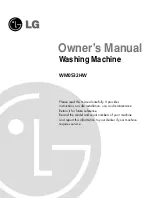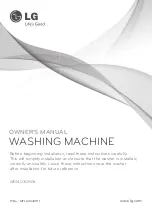
PULSAR
®
PLUS 55-S SUCTION BLAST CABINET
Page 8
© 2021 CLEMCO INDUSTRIES CORP.
www.clemcoindustries.com
Manual No. 30423
1.10.6 Plastic media:
Plastic and similar lightweight
and/or nonaggressive media are generally not
recommended for suction-style cabinets because the
lower blast velocity of suction blasting combined with the
softer and lighter-weight media do not provide the media
impact for productive blasting. Best performance from
plastic media is achieved with pressure blasting,
requiring a pressure vessel with a 60-degree conical
bottom. Refer to Clemco’s Aerolyte Cabinet line.
1.10.7 Bicarbonate of soda:
Bicarbonate of soda is
not recommended for use in standard cabinets. Bicarb is
a one-use media, which quickly saturates the filter
cartridge(s). Best performance from bicarb media is
achieved with pressure blasting, requiring a pressure
vessel. Refer to Clemco’s Aerolyte cabinet line for
cabinets that are specifically designed for use with
bicarbonate of soda.
1.11
Compressed-Air Requirements
1.11.1
The size of the compressor required to operate
the cabinet depends on the size of the air jet and
blasting pressure. Unless otherwise specified, cabinets
are supplied with a No. 5 (5/32" orifice) jet. Refer to the
table in Figure 5 to determine air consumption. Consult
with a compressor supplier for a suggested compressor
size based on the air consumption.
COMPRESSED-AIR CONSUMPTION IN CFM
BNP Gun
Jet
Orifice
Nozzle
Orifice
CFM
PSI
No. 4
1/8"
5/16"
21
80
No. 5
5/32"
5/16"
32
80
No. 6
3/16"
3/8"
47
80
* Using a No. 6 jet and nozzle in applications that
produce excessive dust may cause poor visibility.
The 300 cfm reclaimer may not recover heavy,
coarse abrasive from the cabinet hopper when
using a No. 6 jet and nozzle combination.
Figure 5
1.11.2
The compressed-air filter at the power module’s
air-inlet connection removes condensed water from the
compressed air. Its use is especially important in areas
of high humidity or when fine-mesh media are used.
Moisture causes media to clump and inhibits free flow
through the feed assembly. If the filter does not remove
enough moisture to keep media dry and flowing, it may
be necessary to install an air dryer or aftercooler in the
air-supply line.
1.12
Electrical Requirements
1.12.1
Standard cabinets are provided with 1 HP,
120/230V, 1 PH, 60 Hz (wired 120). FLA (full load amps)
are as follows: 120/12, 208/6.6, 230/6.2.
1.12.2
If the motor is standard 120-volt, single phase, a
power cord is supplied.
2.0
INSTALLATION
2.1
General Installation Notes
Select a location where compressed air and
electrical service are available.
The cabinet location must comply with OSHA and
local safety codes.
Provide enough clearance at the dust collector for
cartridge maintenance and to remove the dustbin.
Allow for full access to all doors and service areas
and for efficient handling of large parts.
All air fittings and connections must be wrench-tight.
2.2
Connect Compressed-Air Supply Line
Failure to observe the following before
connecting the equipment to the compressed-
air source can cause serious injury from the
sudden release of trapped compressed air:
Lockout and tagout the compressed-air
supply.
Bleed the compressed-air supply line.
2.2.1
Install an isolation valve at the air source to
enable depressurization for service. Once the valve is
installed, turn it off and perform lockout and tagout
procedure until all air connections are done.
To avoid the risk of injury from compressed air,
install an isolation valve and bleed-off valve
where the air supply is tapped into the
compressed-air system. This enables a lockout
and tagout procedure and depressurization of
the compressed-air line before performing
maintenance.










































